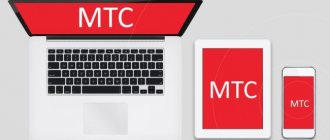I know from myself how unpleasant it can sometimes be not to understand something about the behavior of your smartphone. Of course, every failure and misunderstanding results in additional knowledge and skills. All you have to do is open Google and describe your problem as simply as possible. Another thing is that in order for the answer to the question to be found, someone in front of you must encounter the same problem, solve it, and then describe it in the most accessible language. Therefore, do not be surprised when you come across articles on the pages that talk about very primitive things - many people really don’t know this.
We use many Internet communication standards, but often have no idea how they differ
Today we will talk about the designations E, H, H+, 3G, 4G, LTE and LTE+, which probably haunt you all the time you spend with your smartphone. Oddly enough, many users have no idea what these marks are, what purpose they serve, or why they change from time to time. Let's deal with everything in order.
What is this circle on the phone screen and how to remove it
All these letters and numbers that you most likely see in the upper right or left corner of your smartphone indicate the type of Internet connection you are currently using. It is clear that this technical information is of little interest to anyone, but it is from these designations that one can understand why the download speed has dropped so much or, conversely, increased very atypically.
3G speed and other benefits for users
The creation of the third generation network marked the creation of a unified mobile communication environment that supports broadband data transmission systems and ensures global mobility. 3G is based on IP technology with packet data transmission. This allowed subscribers to be online continuously for the first time. To do this, you just need to be where cellular communication is available.
After its introduction, the 3G communication standard competed with Internet providers due to its wide possibilities for the user. The advantages of third generation networks include:
- data transfer speed - up to 2 Mbit/s;
- access to high-speed Internet from anywhere;
- remote access to the corporate network;
- video telephony;
- streaming video;
- banking services;
- virtual wallet;
- Online Games.
With the advent of 3G, users have the opportunity to make online purchases using mobile devices. Third generation networks made it possible to use a cell phone as a virtual wallet, which became increasingly relevant as e-commerce developed.
3G networks have also provided a wide range of business opportunities. Logistics companies were able to optimize the operation of vehicle fleets and courier services. Aspiring entrepreneurs have the opportunity to get ideas for new startups from the mobile Internet.
What you need to know about 3G
What you need to know about 3G
- Introduction
- Different 3G standards
- UMTS
- HSDPA
- HSPA+
- DC-HSPA+
- How to find out which 3G standard is available to you
- A short summary
Introduction
You have decided to connect to mobile Internet. You know that in your area there is 3G coverage from some cellular operator, or several operators. Where did you find out about this - your neighbor has the Internet, you asked about coverage maps, your smartphone suggested it, or the ubiquitous OBS agency reported it - it doesn’t matter.
Different 3G standards
The most common networks in Russia now are cellular networks of the 3G generation. 3G technology comes in different standards, this has happened historically as the mobile Internet developed.
The main carrier frequency in the 3G standard is 2100 MHz, more precisely the ranges 1920-1980 MHz (Uplink) and 2110-2170 MHz (Downlink). The exception is several areas in Russia, where for military reasons it is prohibited to use frequencies of 2-2.1 GHz. This is, in particular, the south and southwest of the Moscow region. Here, for all 3G networks, a frequency of 900 MHz is allocated, more precisely the ranges 880-915 MHz (Uplink) and 925-960 MHz (Downlink),
Let's consider all popular standards in 3G networks.
UMTS
This standard, depending on the frequency, is designated as UMTS2100 or UMTS900. I note that Megafon distributes UMTS900 throughout the Moscow region, along with UMTS2100. Internet access speed in UMTS mode does not exceed 2 Mbit/s.
HSDPA
This standard can also be classified as the first generation of 3G networks, but it is already much faster than UMTS. The throughput in the initial version of HSDPA (High-Speed Downlink Packet Access) was 1.8 Mbit/s. The most widespread, including in our country, is the second version of HSDPA, which has speeds of up to 3.6 Mbit/s. As the standard developed, the speed increased first to 7.2 Mbit/s and then to 14.4 Mbit/s. These are not bad speeds, but this is a theoretical limit; real speeds are usually much less. The apogee of HSDPA evolution was its two-channel version, also called DC-HSDPA, with speeds reaching 28.8 Mbit/s. 3G HSDPA/DC-HSDPA networks are still used in many regions of Russia, but with modernization they are giving way to either HSPA+ or 4G LTE. To realize the speed capabilities of DC-HSDPA, it is necessary to use a 2x2 MIMO scheme.
HSPA+
The technology is based on the previous HSDPA standard, but allows for significantly higher speeds. Already in the starting version, HSPA+ (HighSpeedPacketAccess) gives speeds of up to 21.6 Mbit/s. This option is mainly used in 3G networks nowadays. All modern 3G/4G modems support this operating mode. Many people classify HSPA+ networks as the so-called 3.5G transition generation.
DC-HSPA+
The fastest 3G network standard in use. This is essentially two-channel HSPA+ with a channel width of 10 MHz. Accordingly, the maximum theoretical speed is 2 times higher - 42.2 Mbit/s. Such networks are often even called 3.75G, i.e. almost 4G. Indeed, in DC-HSPA+ networks, actual Internet access speeds are often comparable to average 4G performance. To realize the speed capabilities of DC-HSDPA+, it is also necessary to use a 2x2 MIMO scheme.
How to find out which 3G standard is available to you
You can find out the standard in two ways: approximately - using a smartphone that supports 3G and accurately - using a modem.
Using a smartphone - one of three icons appears in the notification bar when data transfer mode is turned on: 3G, H or H+. The first 3G icon appears and remains stable when you have UMTS. The second and third icons remain when the smartphone detects a more advanced standard, but it is impossible to say which one.
Using a modem, this standard can be found immediately on the first page of the HiLink interface.
The Connect Manager program is less informative; only 3G is indicated in the interface:
In this regard, it is necessary to use an additional MDMA program, which shows the next signal standard.
The MDMA program shows the WCDMA standard, this is a common 3G standard; in the ConnectionType window you cannot select, for example, HSPA+. In order to obtain more specific information, insert this SIM card from MGTS into a modem with a HiLink interface and get:
The MGTS company uses MTS towers, so very often MGTS is defined as MTS. Thus, we have - our available standard for the MTS operator is DC-HSPA+, the fastest standard possible in 3G. It is advisable to choose a MIMO 2x2 antenna as an antenna.
I will also note that the HiLink interface is more informative here.
A short summary
Let's summarize our information in a table
| 3G standard | Maximum achievable Mbit/s speed | Application of MIMO 2x2 |
| UMTS | 2 | No |
| HSDPA | 14.4 | No |
| HSPA+ | 21.6 | No |
| DC-HSPA+ | 42.2 | Yes |
The best tool for determining the 3G standard is a HiLink modem.
Best regards, your dmitryvv
OBS Agency - One Grandmother Said.
The text of the first part of the article is based on this material.
What is 3G Internet
3G users have the opportunity to connect to the Internet in different ways:
- via mobile phone;
- via computer;
- via phone with synchronization with PC.
To establish a 3G Internet connection using a computer, a PCMCIA card and a 3G USB modem are provided, into which you need to insert a SIM card. Another convenient option for connecting to 3G Internet is synchronizing your mobile phone with a PC using a USB cable or via Bluetooth.
Advantage of 3G connection
Thanks to the third generation of backbone communication, it is possible to:
- Make video calls
- Improve the quality of transmitted sound (no noise, reduced number of failures, breaks and failures
- Increase network capacity. The overloads that happened in GSM networks are practically absent today
- Increase the packet data transfer rate (up to 384 kBit per second). This made it possible to watch videos from the Internet, play online games, communicate on social networks, etc.
Communication quality in 3G network
Among the advantages of 3G is the good quality of cellular communications, which was absent in previous generations of mobile devices. Even during peak loads, the new technology began to cover the needs of residents of large cities. Interference during calls and connection problems have been eliminated.
Data protection technology was implemented in third generation networks. Thanks to multi-level coding, the developers managed to ensure the confidentiality of telephone conversations. At the same time, the radiation level was reduced by 4-8 times. 3G phones have become environmentally friendly.
Continuity of communication
Another advantage of 3G over GSM is that the connection is interrupted less often. 2G had frequency and time divisions of channels, so when moving between broadcast stations, data transmission could slow down or the connection would be cut off altogether.
In the third generation, this problem is solved by using “soft handover”. The principle of operation is this: when you move away from one access point, the connection is picked up by another - to which you are approaching. It turns out that the first one begins to transmit less and less data, and the second one begins to transmit more and more.
If you are in a city where the coverage is good, then the possibility of a connection loss is excluded. To save space, mobile operators install their antennas on the roofs of buildings. They are capable of picking up a signal from a mobile device at a distance of up to 35 km.
What is the difference between 3G and 4G
In the early 2000s. 3G technology has become a real breakthrough, providing users with round-the-clock access to the Internet and high-quality communications. However, the fourth generation network is now gaining popularity. It is an improved version of 3G and provides better performance.
Connection speed
The maximum data transfer speed in a 3G network is up to 2 Mbit/s, and in 4G - up to 1 Gb/s. These figures are achieved by increasing the number of MIMO antennas. However, in practice, the connection speed on both networks may differ significantly from the maximum, depending on various factors, including:
- mobile device model;
- visited sites;
- server used;
- subscriber location.
A little history
When communications first became mobile, people who could afford such a service used cordless phones and the NMT (Nordic Mobile Telephone) standard. This standard, which appeared in 1981, became the first generation of mobile communications. That is 1G . The frequency standard at which the NMT standard operated was 450 MHz .
the GSM standard was created . It is considered the second generation of mobile communications - 2G . This standard, which by the way appeared in our country only in the late 90s, worked in the range 890-960 MHz . And later he began to work in the 1800 MHz .
IMPORTANT: The GSM standard, compared to NMT, has higher speed and higher quality of data transmission, but a smaller coverage area. But, it can be expanded by installing additional towers.
The GSM standard is still in use. It is thanks to him that we make calls using our mobile phones. But what about the Internet?
The next “revolution” occurred in 1997. GPRS technology was developed . Many industry analysts call GPRS - 2.5G . It is thanks to this technology that it becomes possible to transfer data when necessary.
Of course, mobile access to the World Wide Web was available even before the advent of GPRS: CSD (Circuit-Switched Data) technology made it possible to connect at a speed of 9600 bits per second using modems built into mobile phones. But, firstly, the speed of such a connection remained low, and secondly, metering was used with per-minute billing.
Thanks to GPRS technology, operators were able to monitor the amount of traffic, rather than the time the line was used. What was the impetus for the development of the mobile Internet.
Among other things, GPRS technology has increased data transfer speeds. Ideally, it could reach 100 kBit per second.
GPRS, an undoubtedly revolutionary technology but with many disadvantages, has been replaced by EDGE . With its help, the throughput of receiving and transmitting data has significantly improved, and some other shortcomings of GPRS have been resolved.
Based on these technologies, CDMA (Code Division Multiple Access) and, most importantly, UMTS (Universal Mobile Telecommunications System) standards were developed. These standards became the third generation of mobile communications. 3G operates in the 2100 MHz .
What's next?
The ability to use 3G communications today is provided by all Big Three operators, Tele2, as well as the new operator Yota. Each of them has special tariffs for mobile Internet that allow you to use it without breaking the bank.
IMPORTANT: Yota has especially succeeded in this regard. This operator, which uses Megafon's power, has three completely unlimited tariffs in its range of tariffs. They differ only in data transfer speed from 512 to maximum.
Technologies do not stand still. Today, many operators in our country offer the use of the fourth generation of mobile communications. 4G technology is already used in all major cities of our country. Its coverage area is growing every day.











